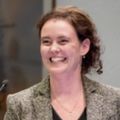Radboud University Medical Center, HAN University of Applied Sciences, Nijmegen, Netherlands
BIOGRAPHY
CET
Complex pain management and co-morbidities
Presented at:
EFIC Virtual Pain Education Summit
Speakers
Abstract
Chair: Rianne Van Boekel, Netherlands
Managing pain and co-morbidities
Rianne Van Boekel, Netherlands
Rianne Van Boekel, Netherlands
Patients with multiple medical conditions are common in clinical practice. Especially in the elder population multimorbidity is common. In pain management multimorbidity may cause extra problems, for example when several painful conditions are enhancing one another. If a medical condition is not necessarily painful important symptom interactions and implications for diagnostics and therapy may arise. This is a complex interaction of multiple factors and not merely the sum of the symptoms from each separate condition. To understand these interactions knowledge of clinical practice guidelines addressing the management of pain in patients with comorbidities is necessary.
In this lecture participants are stimulated to identify problems faced by patients with comorbidities by short cases that are discussed. Also the need to address these problems using clinical reasoning and to develop a tailored multidimensional treatment plan working with an interprofessional team will be discussed.
Assessing health literacy and promoting self-management
Nadja Nestler, Austria
Nadja Nestler, Austria
Complex case study: Patient with neuromodulation
Inge Arnts, Netherlands
Inge Arnts, Netherlands
In my presentation, I will describe a practical experience when taking care for a patient with comorbidities. I will guide you through my personal process and tell you about my first resistances and quick conclusions when including this patient for neuromodulation process. I will show you how these resistance and conclusions chanced when I met the patient and made shared decisions. By listening to the patient I changed my thoughts and started to think in possibilities which turned out positive. With as primary goal; improving patients quality of life.
Q&A



